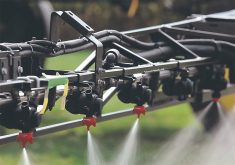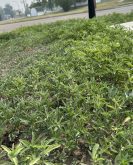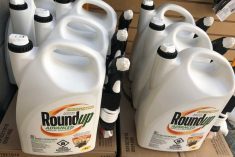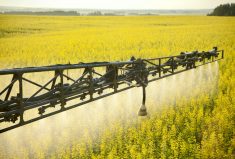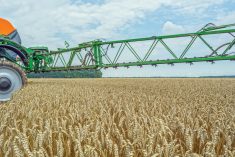Glyphosate changed farming across the globe — but if farmers don’t want to lose the ‘chemical of the century’ entirely, they’d better use it less often.
That’s the view of a seed grower from New Zealand who made farming without glyphosate the focus of his Nuffield research.
It’s hard to overstate the impact of this one herbicide on agriculture — nor what would happen if it one day became unavailable, Hamish Marr said at Farming Smarter’s recent Global Crop Production virtual conference
“What Roundup did to agriculture was a complete shift in the way farmers approach weed control and cultivation around the world,” said Marr.

“But in developed countries such as yours and mine, glyphosate is under increasing pressure toward de-registration, and as a farmer who depends on it, like many, I wanted to understand what the issues are, what can be done about it, and if we could operate without it.”
Prior to the pandemic, the fifth-generation farmer from New Zealand’s south island spent six months travelling to 13 different countries and speaking to “people who told me they couldn’t farm without it, and people who told me they could.”
And while he’s largely in the first camp, the latter demonstrates there is a viable alternative to the status quo, he said.
“In terms of living without Roundup, I don’t think it’s possible or sustainable given the population today, but what I do think is that we really have to consider how we use Roundup going forward,” said Marr. “There are examples of people who are very successfully farming without Roundup. We can learn lessons from those farmers.”
Read Also
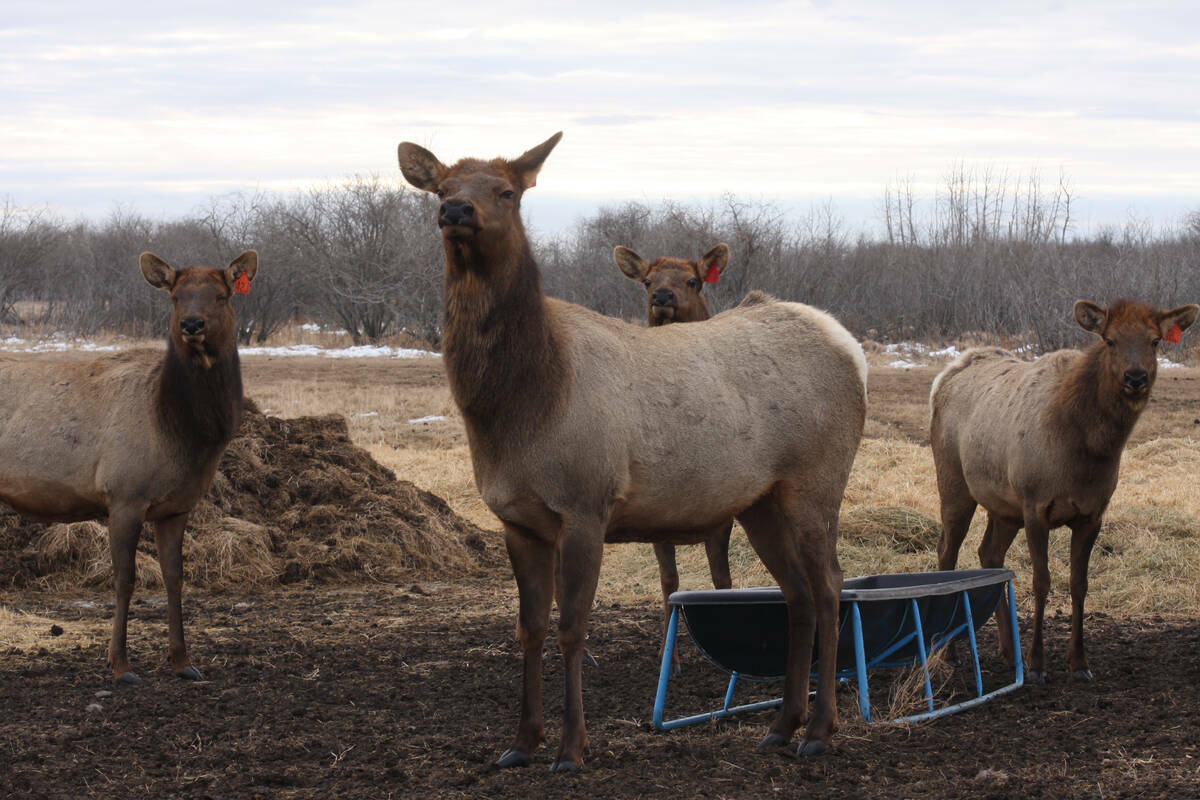
Cervid harvest preserves to be developed in the province under Bill 10
The Government of Alberta has given approval for creation of cervid harvest preserves.
But first, we need to learn from past mistakes, he said.
Before 1973 when Roundup first hit the market, farmers only had two options for weed control — cultivation (six or seven times prior to seeding, in some cases) or expensive selective herbicides that left residues. The former wasn’t just causing soil loss but also eroding the bottom line.
“So much time was spent and so much fuel was burned on weed control,” said Marr.
Roundup was a true game changer — broad spectrum, low toxicity for mammals, and you could spray one day and seed the next “without any fear of damage to the following crop.” That’s why it’s often called the “chemical of the century,” he said.
“These three factors in combination have enabled some huge advances in agriculture,” he said. “It has enabled minimum tillage and zero tillage to become a globally accepted best practice. It’s drastically reduced soil erosion because farmers now cultivate simply to create a seedbed, not to control weeds. In warm climates, continuous cropping became possible, and in more recent times, cover cropping has become common.
“All of this was possible because glyphosate completely changed weed control as we know it.”
A wake-up call
But Roundup became the victim of its own success.
“The success of Roundup as a chemical has led to so much of it being applied and so often that we now have a huge global movement working against its use,” he said.
Austria became the first EU country to ban the chemical and Germany plans to phase out its use in 2024. A ban is being considered in his home country, Marr said.
“Even though here in New Zealand we only apply glyphosate to six per cent of our farmland annually, it is still public enemy No. 1. The public and the politicians see a completely different story than those of us in agriculture.”
And even though he farms, he only had second-hand knowledge about the herbicide as New Zealand doesn’t have GM crops (and hence no glyphosate-tolerant ones).
“Prior to visiting Canada and the U.S., my understanding was limited to what I read or what we heard from groups like Greenpeace,” he said.
“The consumer is being told that glyphosate and GMOs are killing the environment. But what they aren’t told — and certainly don’t understand — is what GM cropping has done for food safety, nor what Roundup has done for food production globally.”
His Nuffield travels were a wake-up call and Marr concluded that the story of Roundup holds a lesson that producers should never forget.
“This should have been a win win for farmers and consumers,” he said. “They sold the good news story about GM to farmers but forgot about the consumers, and by then, it was too late.”
A second lesson is that Mother Nature doesn’t like overuse of pesticides, either.
Glyphosate-resistant weeds are on farms all over the world, including here in Alberta, and “that is going to be difficult for a lot of farmers to get out of,” said Marr.
And the odds of another chemical replacing glyphosate (or other herbicides) are very low.
“Many companies have exhausted the supply of new technology and new chemistry. There simply will not be in the future new herbicides to any great degree, and that is a real thing farmers need to understand.”
A new mindset
Farming is already getting “incredibly complicated” for those forced to turn to cultivation to manage resistant weeds.
“Farmers who have resistance have already lost the battle and face something like this in the future. For the rest of us, we have to consider how to responsibly use the tools we have so we don’t get to that point.”
One way to do that is called ‘integrated weed management’ — a relatively new term for an old concept loosely defined as managing a field based on the weeds that are present in it.
“When I looked at integrated weed management at the start, I was quite daunted. But there’s nothing to be frightened of in this,” said Marr. “In actual fact, a lot of farmers and agronomists are doing this already. They might not be doing it all, but they’re doing a fair bit of it without realizing it has a name.”
It includes having diverse cropping systems, choosing the right cultivars for the land, targeted weed control, and rigorously monitoring and evaluating successes and failures.
As a place to start, extending your crop rotation can increase the time between glyphosate applications and reduce the risk of developing resistance. Marr saw that first hand on his travels during his visits to regenerative and organic operations.
“The organic and regenerative agriculture farmers immediately increased their crop mix because they realize they need to manage these weeds in a different way,” he said. “The more we increase our crop mix, the more opportunities we have in winning the war on resistance because we’ll be using different methods for weed control for different crops. They may all be chemicals, but they’ll be different chemistry.”
Including livestock within the cropping system can also help, he added. During his Nuffield travels, Marr visited a large farm in the United Kingdom that had “massive problems” with resistant black grass.
“They felt like they were losing the war with five applications of Roundup each year,” he said. “Out of desperation — and quite by accident — they tried grazing sections of their farm between crops and in the winter with sheep, and quite unbelievably, found that they lessened the amount of Roundup they were using by upwards of 90 per cent.
“This particular operation has completely changed their crop mix and the intensity of their operation as a result. As a result of that, the black grass problem as really gone away. This is just one example of integrated weed management.”
By taking a farm system approach to weed control, producers can reduce their reliance on glyphosate while ensuring the chemistry remains available and effective into the future.
“Roundup has become, to many, an insurance policy that has kept our farms clean without us having to think about it,” said Marr.
“It’s very easy to reach for a can. The reality is that sometime in the future, the can may not be there because it doesn’t work anymore.
“We must use all of the tools available to us to ensure we keep the efficacy of the ones we depend on year in year out.”
However, every operation will be different, so farmers will need to look at their own system and determine where it can be changed or adapted to manage weeds.
“Everywhere is different and we all have different constraints,” he said. “But if we evaluate the natural capital on all of our farms, there are little advantages that each and every one of us have that we can use.”
Farmers tend to be “very shy” about tackling these issues but if you don’t take a proactive approach to integrated weed management, “by then, it’s often too late.”
“If we don’t learn the lessons on resistance, for example, we’ll almost certainly lose these tools in time. That is a real threat, and if we do, we will be forced into major adaptive change,” said Marr.
“Some people think this is moving away from what we call traditional agriculture, but agriculture is always changing. There is always innovation — and generally, innovation is good.”



